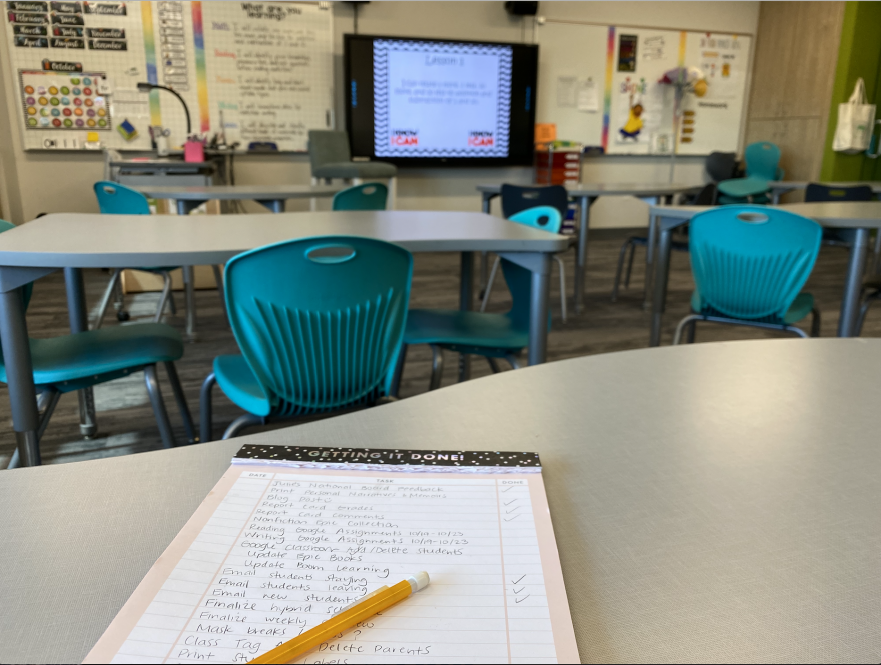Teaching during the COVID-19 pandemic has been TOUGH.
What many people might not know is how much work teachers, administrators, and other school personnel put in behind the scenes when decisions are made at the state or district level. Systems, processes, and schedules have to be worked and reworked. Change is inevitable.
In March, Governor Ducey closed schools in Arizona. Teachers all over the state (and country) transitioned to remote learning with little to no professional development or training. We held our heads high and committed to do our best to create meaningful learning opportunities and memories for our students. In June, the Arizona Department of Education and Arizona Department of Health Services released the Roadmap for Reopening Schools including benchmarks for cases, percent positivity, and COVID-like illness. Teachers had time to attend professional learning workshops in order to plan, committing once again to do our best for our students. Now as numbers in our state trend down, many schools look toward preparing for another transition- safely returning to in-person instruction.
My district’s governing board voted on a return to school using a hybrid model. Ever since teachers, administrators, and other school personnel have dedicated their time and energy (before, during, and after school hours) to prepare for students to return to campus. Here are just some of the things that had to be done to prepare.
Change in teaching assignments
Some teachers want to teach in person, some teachers have accommodations to work from home/teach remotely, still others prefer to remain teaching remotely for personal or family health concerns. This requires districts and building administrators to change teaching assignments. Some are voluntary while others just have to go with the flow to best support students. In my grade level, all of us wanted to teach in person but one person had to be reassigned to teach remotely. Even though we are teaching different instructional models, we continue to collaborate and plan with each other to make sure students have equitable opportunities in both in-person and hybrid instruction.
Change in student placement
Students had to be shifted and divided up due to their choice of in-person (hybrid) or remote learning. Knowing that some students will not be with me next quarter is heart-breaking. I will miss these students although I know they will be in good hands with my colleague. I have to say goodbye to students and parents that I have worked hard to build positive relationships with and I need to begin to build strong relationships with the new students I will be teaching and their families. This means sending out a welcome letter, setting up a Zoom meeting so we can get to know each other, and meeting with their previous teacher. The change in student placement also means that I need to redo my roster in Google Classroom, update my email lists, change guided reading and math groups, and more. In addition, I am planning meaningful activities to help my new and old students get to know one another.
Change in day to day routine
My district and school site have a well thought out mitigation plan. As a teacher, I need to read the plan and start thinking about what the mitigation plan will look like in action day to day for my students. I have spent time rearranging my classroom to provide social distancing to the fullest extent possible and revamped the way supplies are stored so that students have access to their own supplies. I am planning to build in time for mask breaks, hand washing, and disinfecting/cleaning high touch surfaces throughout the day.
Change in curriculum pacing
As we shift to hybrid instruction (cohort A on campus Monday and Wednesday and cohort B on campus Tuesday and Thursday) I have to work to completely revamp the daily learning activities, trying to determine what’s most important to teach in person in the classroom versus what students can do on their own or with parent support on days they are not in the classroom. I am still in the process of developing a clear, concise, and informative weekly overview to help students and parents alike when students are not in the classroom.
There is A LOT of change. It is exhausting.
What many people might not know is the effort, planning, and intentionality that teachers, administrators, and support staff put into making school the best possible experience for children will never change.









